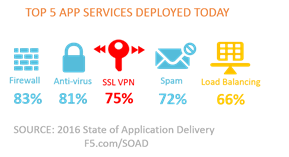アプリを防御していますか、それとも保護していますか?
テクノロジーでは、意味の微妙な違いさえも関係ないかのように、多くの単語を互換的に使用する傾向があります。 しかし、場合によっては、ある単語と別の単語の使用の違いは実際にはかなり重大です。 防御と保護の違いのようなものです。
本質的にこれら 2 つは同義語ですが、防御は通常、より反応的であることを考慮してください。つまり、攻撃を受けて自分自身 (または他人) を防御することを意味します。 一方、保護は、より積極的なシステム、つまり「どこかにある」システムを呼び起こします。
防御:攻撃から身を守る、または攻撃に抵抗する行為
防御は何かがすでに起こっていることを意味します。 私たちの行動は、積極的というよりは受動的です。 多くの場合、これは攻撃者が境界内にいることを意味します。
保護:危害や損失などから守られている状態:守られている状態
保護とは、より積極的なアプローチを意味し、私たちはすでに保護を提供するための措置を講じています。 私たちは積極的に攻撃を受けているわけではなく、ただそれに備えているだけです。
おそらく私は細かいことを言っているのかもしれませんが (これが初めてではないでしょう)、このような微妙な違いは、applications(およびアプリケーションがアクセスできるデータ) に適用し始めるときに重要になります。 現実には、攻撃者がマルチベクトル攻撃を強化しているため、applicationsの保護と防御の両方が必要になります。 ボリューム攻撃はリソースを飽和させるように設計されています。 ネットワーク、ルーター、ファイアウォール。 アプリ固有の攻撃はアプリのリソースを狙ってサーバーに過負荷をかけ(メモリ、I/O、ディスク容量には限りがあるため)、ビジネスを停止させます。 企業ユーザーが業務に必要なクラウド化が進むビジネス アプリにアクセスできない場合、生産性が低下します。また、applicationsが応答しない、または利用できないために消費者顧客が閲覧や購入、ビジネス全般を行えない場合には、利益が低下します。
これがサービス拒否攻撃と呼ばれる理由です。 ネットワークを飽和させ、サーバーに過負荷をかけることで、内部および外部のユーザーへのサービスが拒否されます。 実際のところ、これらはビジネス妨害攻撃と呼ぶべきものです。なぜなら、ますます大規模化するこれらの攻撃は、結局のところ、ビジネス妨害攻撃を行っているからです。
また、防御策も導入されており、オンプレミスのファイアウォールとその他のセキュリティ関連サービスもいくつか導入されています。 ご存知のとおり、当社のapplication配信の現状レポートによると、ほとんどの組織がアプリを配信するために導入している 10 以上のアプリ サービスのうち、セキュリティ サービスが主流となっています。 しかし、これらは防御的なものであり、攻撃はすでに門前にあると言えます。そこでは帯域幅が制限され、企業のデジタル リソースが急速に消費されてしまいます。 大規模でマルチベクトルの攻撃に直面したオンプレミスの保護は、攻撃者がラインを突破したときに銃剣を装着するのと同じです。
一方、クラウドベースの保護では、攻撃者を撃退するために利用できる帯域幅とリソースが一般的にはるかに多くあります。 これにより、オンプレミスにきちんと格納されているすべてのアプリやデータから隔離され、モハーベ砂漠の暴風雨よりも速くネットワーク接続が飽和状態になることがなくなります。

これを DDoS 防御ではなく DDoS保護と呼ぶのには理由があります。 クラウドベースのDDoS防御は そもそも破壊行為者が芝生に立ち入らないようにすることで、ビジネスの混乱を防ぐことが目的です。 それは、悪者を道端で阻止し、ビジネスの宝であるアプリやデータから遠く離れた場所で阻止することです。
最近のインターネットとセキュリティの状況を考えると、防御を放棄して保護を優先することを真剣に提案する人はいないでしょう。 逆に提案することもすべきではありません。 違反やサービスの中断がビジネス(そしてブランド)に及ぼす深刻な影響を考慮すると、現代のビジネス継続性にとって重要な資産とリソースを保護し、防御することが望ましいと言えます。 なぜなら、ビジネスを中断させるのはもはや災害だけではないからです。
